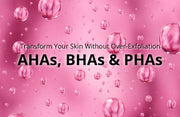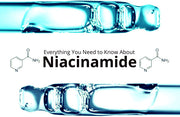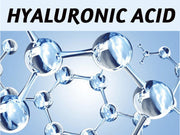What Are Exfoliating Acids and Why They Matter
Exfoliating acids are chemical ingredients that dissolve dead skin cells, unclog pores, and reveal smoother, brighter skin. Unlike physical scrubs, which can cause micro-tears, acids work on a molecular level, gently loosening the bonds between old cells. Used correctly, they refine texture, fade dark spots, and boost the absorption of other skincare products. But overuse can harm your barrier, so balance is key.
The Three Main Types of Exfoliating Acids
Most chemical exfoliants fall into three main categories - AHAs, BHAs, and PHAs. Each works differently and suits specific skin concerns.
1. Alpha Hydroxy Acids (AHAs)
AHAs are water-soluble acids that exfoliate the skin’s surface, improving tone and texture. They are ideal for dry or dull skin. Common AHAs include glycolic acid, lactic acid, mandelic acid, and citric acid.
- Glycolic acid: Small molecules penetrate deeply to smooth fine lines and fade dark spots.
- Lactic acid: Gentler and hydrating - great for sensitive skin.
- Mandelic acid: Larger molecules exfoliate slowly, minimizing irritation.
2. Beta Hydroxy Acids (BHAs)
BHAs are oil-soluble and penetrate into pores, making them perfect for oily or acne-prone skin. The most common BHA is salicylic acid, derived from willow bark. It removes buildup inside pores and helps control breakouts while reducing inflammation.
3. Polyhydroxy Acids (PHAs)
PHAs are the gentlest group of exfoliating acids. They have large molecules that stay on the skin’s surface, providing mild exfoliation while also attracting moisture. Gluconolactone and lactobionic acid are popular PHAs used in formulas for sensitive or mature skin.
How to Choose the Right Acid for Your Skin Type
- Dry or Dull Skin: Choose lactic or glycolic acid for brightness and smoothness.
- Oily or Acne-Prone Skin: Go for salicylic acid to unclog pores and reduce shine.
- Sensitive Skin: Opt for mandelic or PHA-based exfoliants for gentle renewal.
- Mature Skin: Combine low-strength glycolic acid with PHAs to promote glow without irritation.
Step-by-Step Guide to Using Exfoliating Acids Safely
Step 1 - Start Slowly
Introduce exfoliating acids gradually - 1 or 2 times per week. Overuse can lead to redness and barrier damage. Always patch test before full application.
Step 2 - Apply to Clean, Dry Skin
Use acids after cleansing and before serums or moisturizers. Avoid applying on damp skin, as this increases penetration and sensitivity.
Step 3 - Layer Wisely
Do not mix multiple acids in one routine. Stick to one type at a time. You can alternate AHAs and BHAs on different days if needed.
Step 4 - Moisturize Afterward
Acids temporarily thin the skin barrier. Seal hydration with a soothing moisturizer containing ceramides, niacinamide, or squalane to restore balance.
Step 5 - Protect with Sunscreen
Never skip SPF 30+ the next morning. Newly exfoliated skin is more sensitive to UV rays, and skipping sunscreen can reverse all progress.
Common Signs of Over-Exfoliation
It’s easy to go too far when chasing glow. Look out for these symptoms:
- Persistent redness or stinging sensation
- Dry, flaky patches
- Increased breakouts or sensitivity
- Makeup no longer sits well on skin
If you experience these signs, stop acids immediately and switch to barrier-repair products until your skin feels calm again.
Combining Acids with Other Ingredients
- Niacinamide: Helps soothe skin after exfoliation and reduces inflammation.
- Hyaluronic Acid: Restores hydration and plumpness after chemical peels.
- Retinol: Avoid layering with acids in the same routine - alternate nights to prevent irritation.
Pro Tips for Healthy Exfoliation
- Use exfoliating acids at night to minimize sun sensitivity.
- Don’t exfoliate on days you shave or use strong actives like retinol.
- Hydrate before and after exfoliating for better comfort.
- Less is more - glowing skin comes from consistency, not aggression.
Shop the Routine
Explore skin & body care for gentle cleansers and moisturizers. Discover treatments with exfoliating acids designed for all skin types. Try mini beauty essentials to test AHAs, BHAs, and PHAs safely before committing to full-size formulas.
FAQ - Exfoliating Acids
Can I use AHAs and BHAs together?
Yes, but not in the same routine. Alternate nights or use a combined low-strength formula to avoid irritation.
How often should I exfoliate?
Start with 1-2 times a week, then increase to 3 if your skin tolerates it well.
Do I need to wash off exfoliating acids?
Leave-on acids (like toners or serums) should stay on the skin, but always follow product instructions.
What’s better for acne - AHA or BHA?
BHAs penetrate deeper into pores, making them more effective for blackheads and acne-prone skin.
Can exfoliating acids make my skin sensitive?
Yes, overuse can weaken the barrier. Always moisturize and protect with SPF after exfoliating.




